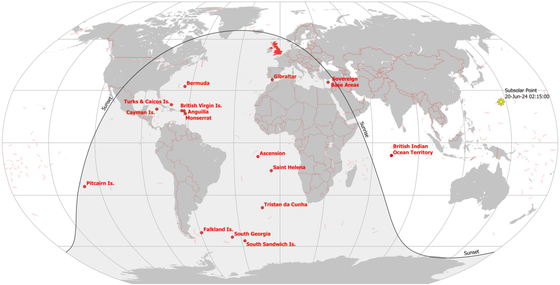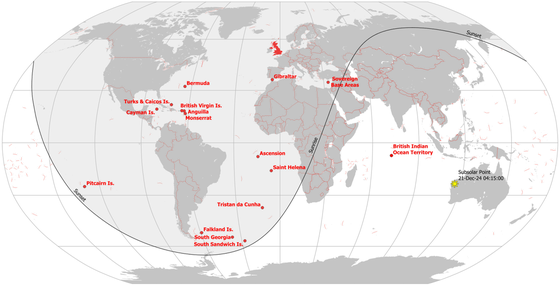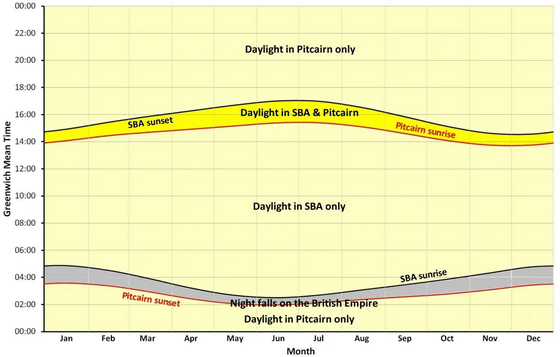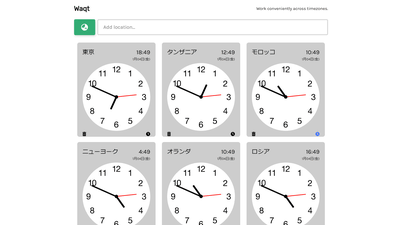Finally, the UK, the 'country where the sun never sets,' becomes the 'country where the sun sets.'

A country with territory around the world where the sun always rises somewhere is called a 'country where the sun never sets,' like Spain, which once held global hegemony. Even in the 21st century, the United Kingdom and France remain 'country where the sun never sets,' but in 2025, it seems that the United Kingdom has finally become a 'country where the sun sets.'
The Oikofuge: The Sun Sets On The British Empire
At its height, Britain was a superpower that controlled a quarter of the world, but since then, many of its colonies have gained independence, and it is no longer considered a superpower today. However, it has overseas territories all over the world, and has continued to be known as the 'country on which the sun never sets,' meaning that the sun always rises somewhere.
According to former doctor and blogger Grant Hutchinson, the two key areas in keeping the sun from setting on British soil are the Pitcairn Islands in the South Pacific and the British Indian Ocean Territory (BIOT).
Below is a sunshine chart created by Hutchinson, with the vertical axis representing time (from bottom to top) and the horizontal axis representing the month. The black lines across the graph represent sunsets and sunrises in Greenwich , the red lines represent sunsets and sunrises in the Pitcairn Islands, and the green lines represent sunsets and sunrises in BIOT. Dark yellow indicates when the sun rises in multiple of the three regions, while light yellow indicates when the sun rises in a single region, showing continuous sunshine 24 hours a day.

This map shows the distribution of light and darkness at 2:15 UTC on the summer solstice in 2024. South America, Africa, and Western Europe are shaded gray, indicating sunset, while the rest of the world is in full sun. Only the British Overseas Territories (BIOTs) (the red dots on the far right) are in full sun.

The same will happen at 4:15 UTC on the winter solstice in 2024. When the sun sets on the Pitcairn Islands (red mark on the far left) in the South Pacific, the only place where the sun will be rising will be BIOT.

In October 2024, the UK announced plans to return sovereignty over the Chagos Islands, which are part of the BIOT, to Mauritius. The talks appeared to be difficult, as Diego Garcia, one of the Chagos atolls, was home to a military base jointly operated by the UK and the US. However, the Starmer administration quickly concluded the deal and concluded a treaty to return sovereignty in May 2025. The agreement included a commitment to continue operating the Diego Garcia base for 99 years, with the right to extend it for another 40 years after the deadline, after which Mauritius would have the right to veto any further actions.
The handling of Diego Garcia is a rather delicate matter, but it has been reported that it will be 'leased back', so it appears that sovereignty has indeed been transferred to Mauritius.
If BIOT were to leave, the easternmost part of British territory would become the British Sovereign Base Area (SBA), which was established when Cyprus gained independence in 1960. The British government had planned to return the SBA to Cyprus in 1974, but was persuaded by the United States to abandon the plan because it was convenient for flying reconnaissance aircraft over the eastern Mediterranean.
According to Hutchinson, if you create a sunshine chart for Greenwich, the Pitcairn Islands, and SBA, it will look like this, creating a blank time of about one hour between sunset on Pitcairn Island and sunrise on SBA.

In other words, it would no longer be possible for the sun to always rise somewhere in the country's territory, and Britain would no longer be a country where the sun never sets.
Related Posts:
in Note, Posted by logc_nt







